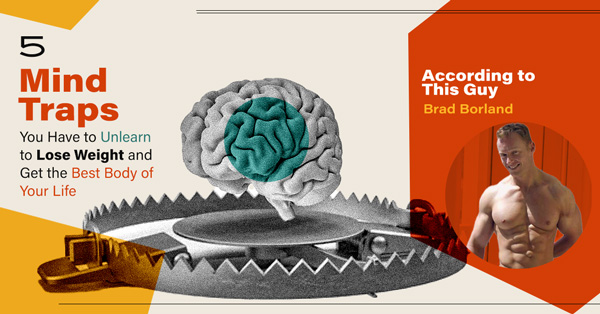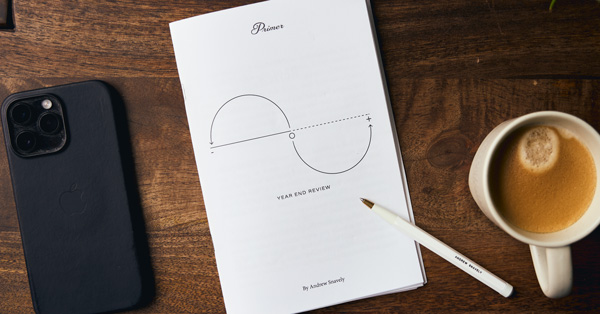 |
This content series is in partnership with smartwater. smartwater, live a life well hydrated. Click here to learn more.
What is this? |
I’d like you to give something a try: think of all the various muscles in your body. Your quads, your biceps, your abs, your pecs, your heart. Think of how aware you are of the fitness of those muscles. Think of your exercise routines, your diet and the other regimens you follow in order to strengthen those parts of your body. Now, imagine that there’s one more muscle on your radar: your mind—specifically, the part of your mind that allows you to monitor and control your own thoughts and feelings. How strong is that?
If you’ve never seriously considered the strength of your cognitive awareness, then chances are, it’s relatively weak. And there’s a good reason for that. Unlike your arms, your legs and your chest, it’s not immediately obvious how one goes about exercising your awareness. And because of that, many of us overlook it. No one can blame you for that. You can’t be expected to exercise a muscle that you don’t even know exists. But after today, you won’t have an excuse.
That muscle that regulates your attention has a name. It’s called mindfulness and in clinical psychology circles, it’s a widely recognized meta-cognitive skill. Cultivating this skill will change your life.
Keep reading.
What is Mindfulness and Why Do We Need It?
As defined by Scott R. Bishop, et al. in Mindfulness: A Proposed Operational Definition (2004), mindfulness is a meta-cognitive skill, primarily the self-regulation of attention. That is, mindfulness is “cognition about one’s cognition” that focuses on monitoring and control of your thoughts.
We need these skills because our awareness of the present moment is constantly under attack. But it’s not our smartphones, our Twitter feeds and 24 hour news cycles that are the biggest aggressors. These agents do contribute to our distraction from the present, but ultimately, they are merely enablers for our own subconscious tendency to drift away. The biggest threats to our awareness come from within.
Our everyday existence is plagued by a constant barrage of anxieties, worries, fantasies and reveries. We spend entire days at work, wishing we weren’t there, feeling bitter and resentful that we are there, and fantasizing about how we would make our grand and dramatic exit if we won the lottery right then and there. We sit through church, thinking about the football game that’s on that afternoon or all the chores we have to do before Monday rolls around. We go to weddings, reunions, family and work functions with our heads buzzing with anxieties about how we’ll be perceived, whether or not people will remember us, and whether or not they’ll be impressed by us. We do all of these things instead of doing what we should be doing: living in the moment.
On some level, we know that it’s better to focus on the experience that’s unfolding in front of us right here and right now. Yet, this backchannel of secondary thoughts and ruminations continues to churn. In spite of knowing that we should not entertain these thoughts, we end up doing it anyway. This is because we are not taking conscious control over our thoughts and emotions. The reason we don’t do this is we don’t know how. We haven’t trained for the surprisingly strenuous task of controlling our own thoughts and emotions. And because we don’t enforce any control over our attention and awareness, something else takes over: our subconscious.
Far more than you realize, your subconscious stands in as a sort of “auto-pilot” during your daily interactions with the world. There are practical reasons for this. For example, the fight-or-flight response, which primes your body for a short burst of possibly lifesaving physical action by pumping it full of adrenaline, is an automatic response that we are all familiar with.
We, like most animals, are born with fight-or-flight built-in. But in addition to these innate responses that have helped our ancestors survive, we have a number of learned responses that we’ve accumulated in our lifetime. Among these habitual responses are a set of subconscious buttons that, when pushed, trigger a cascade of mental and emotional evolutions as complex and automatic as fight-or-flight.
One of the most obvious examples of this is nostalgia—the way you feel when you hear a Marcy Playground song or catch a rerun of My So Called Life. Through experience, you’ve learned to associate those things with your teenage years. If you could step back from that association that’s ingrained in your subconscious, then you might feel differently about “Sex and Candy.” If you could dissociate Marcy Playground and Third Eye Blind from your youth, then you might hear them as just another generic pop/rock song.
Of course, there’d be no reason to consciously unlike the 90s songs from your glory days. Nostalgia is a relatively benign habitual reaction. The reason I bring up nostalgia is because it is a very recognizable result of an emotional trigger. The emotional and mental triggers that you will be attempting to regulate with mindfulness are less obvious and more harmful. For example, stereotyping or self-defeating behavior.
What these subconscious, automatic reactions do is clutter up your mind with extra “stuff” to process that you didn’t necessarily ask for. If this stuff were like junk mail, you’d simply throw it away once you recognized it as spam. But the problem is that when we lack awareness, we lack the ability to sort the junk from our actual, unadulterated conscious thoughts. These extraneous, irrelevant thoughts and emotions take up an equal amount of attention and energy in our minds as the purposeful thoughts. That’s because multitasking is a myth. You cannot engage the same part of your brain with more than one task simultaneously. Instead, you end up clunkily switching back and forth from one to the other. And each time you do, you lose momentum and focus.
In light of this, mindfulness does two big things: it increases your awareness of your own thoughts and it helps bring your attention back to the present moment. It lets us step back from the knee jerk reactions that our subconscious loves to trigger and it prevents us from feeding that extraneous backchannel of useless noise.
But how do we achieve mindfulness?
Cultivating Mindfulness
Mindfulness, as a concept, can seem like a vague and subjective concept, such as morality or authenticity. You may have already felt a desire to be more aware and more mindful. But because what being mindful entails is so hard to nail down, you might not have known where to start.
Fortunately, a vast amount of study has been done on mindfulness. From that cumulative examination has emerged a fairly standard framework for what elements comprise mindfulness. According to Mindfulness and De-Automization (In Press), Yoona Kang, et al., there are four elements of mindfulness that are common among scholarly discussions:
- Awareness – The conscious knowledge of experience—both physical and mental. This is in contrast to the automatic, subconscious responses discussed above.
- Sustained Attention – The ability to remain aware of internal and external stimuli occurring in the present moment. Mindful individuals are able to bring their attention back to their original target of focus whenever their mind begins to drift away.
- Focus on the Present Moment – Similar to sustained attention, mindful individuals are also able to keep their focus in the present, rather than caught up in ruminations about the past or anticipations about the future.
- Nonjudgmental Acceptance – This involves experiencing thoughts, feelings, interactions and other stimulus without judging them as being bad or good, desirable or undesirable, petty or important, etc. Instead, the thoughts and observations are accepted as they are, without distorting or suppressing them.
These four elements work together to bring about the positive changes in your daily life that are the hallmarks of a more mindful existence.
The Mindful Existence: Benefits of Awareness and Acceptance
When we exercise, the part of our body that we target becomes stronger in noticeable ways. When we build our upper body strength, we can lift heavier objects with our arms and back. When we jog, we increase our cardiovascular endurance. When we perform kegel exercises, we improve our sexual control and performance.
So, what are the noticeable benefits of exercising your mindfulness muscle? There are many.
Being a Better Listener
In order to be a good listener, there’s only one real requirement: pay attention to the words that are coming out of the person’s mouth. But for some reason, that seems like an immense struggle for many of us. In this case,sustained attention is an obvious contributor to listening skills. It allows you to continue focusing on the conversation, even if there’s a group of rowdy teenagers behind you or a phone ringing on your desk. But nonjudgmental acceptance plays a huge role as well.
For example, let’s say you are talking to your girlfriend and she says that she misses going out dancing. If you react subconsciously from your guilt or insecurity, you might interpret this to mean that she is bitter at you for not being outgoing. You may become defensive and say something like, “Well, one of us has to work to pay the rent and I’m just too exhausted to go out.” You’ve just said something hostile that has almost nothing to do with what she was trying to communicate. If you were to accept what she was saying nonjudgmentally—e.g. “Oh, she must want to go dancing.”—you might be able to talk and find a way to fulfill that desire. Or, you might simply talk further and find out that it was just a passing notion, and that, really, she’s just as happy chilling on the couch and watching a movie. Mindfulness lets you focus on what people are saying without trying to read their minds or project your own subconscious hang ups onto the conversation.
Acting vs. Reacting
Oftentimes, our gut instincts lead us astray. As we grow older, this becomes more and more true. Responding to a situation with restraint and tact serves us far better than flying off the handle or saying something snarky or passive aggressive. Saying the right thing at the right time in the right tone of voice can mean the difference between losing the love of your life during a fight or staying together, getting a big promotion or getting canned, making a great first impression or coming off as creepy and awkward.
Many times when we look back, the right response is obvious. It’s the classic regret: “What I should have said was…” That’s because once we are out of the moment and those subconscious automatic buttons aren’t being pushed, we can think clearly and act like ourselves.
Mindfulness allows us to think like this even when we are in the thick of possibly delicate exchange. The key to this is to stay in the moment and stay aware of potential subconscious emotional triggers. Under stress, it can be easy to let your mind run away on a tangent, creating a negative feedback loop that makes you even more distressed. But through awareness, you can catch these mental processes before they get out of hand. You can also keep your focus on the present moment in order to avoid reacting to past traumatic experiences that no longer apply to the situation at hand (for example, becoming overly nervous during a second date after the first one didn’t go so well).
Decisiveness
When we make decisions, it’s like there’s a miniature committee in our head taking a vote. When we are indecisive, it’s because the individual committee members are conflicting or waffling or flat out refusing to punch their ballot. A mind full of subconscious clutter only exasperates the situation, and can often lead your committee to cross party lines and go against your values and best judgment. Mindfulness, through all four of the elements, quiets all the extraneous noise so you can take faster, more decisive action.
Focus and Concentration
The main mechanism that you exercise in order to cultivate mindfulness is the ability to consciously choose where you direct your attention and awareness. The benefits toward work, study, creativity and consumption and analysis of multimedia and literature are obvious. Not only can you turn down the internal noise and devote your full attention, you’ll be able to come back to where you left off more easily if you are distracted by stray thoughts or external stimulus. If you’ve ever had the experience of reading an entire chapter of text and feeling like you didn’t retain a single word of it, then sustained attention and focus on the present moment will do you right.
Improved Memory and Enhanced Experiences
One of the greatest things about mindfulness is that it allows us to fully live in the moment. Whether you are at a concert or an intimate dinner with a few friends, mindfulness lets you notice more and be more fully engaged in the experience. This is in contrast to spending the entire time thinking about something else or being self-conscious about how you are being perceived. By devoting more of your mental faculties to taking it all in, you create a more detailed, visceral memory that is easier—and more enjoyable—to recall.
As you can tell, there’s a theme among these benefits. When you turn down the chatter that’s muddling up your conscious thoughts, you begin thinking more clearly, feeling more genuine and acting with greater purpose. Your mind becomes a leaner, more efficient machine, and the whole world comes into clearer focus.
Exercising Your Mind – Getting Started
So now that we’ve established the various ways in which mindfulness is important and beneficial, what are some things you can do to start strengthening that muscle that you didn’t know existed?
The answer: exercise. Just like with your heart, lungs, arms and legs, strengthening your mind takes a weekly or daily routine of disciplined workout. Also similar to a physical workout, you won’t see an overnight transformation—but you will see some immediate benefits. Cultivating and maintaining your mindfulness will be a lifelong, yet rewarding pursuit—just like your jogging or weight training regimen.
There have been numerous books and guides written on mindfulness—many of which focus on meditation. And these will be excellent for when you’ve begun a lifelong routine of mindful exercise. But for now, let’s focus on getting you started.
The four elements of awareness, sustained attention, focus on the present moment and nonjudgmental acceptance can be further broken down into techniques that will heighten your mindfulness. But the one you should start with is called bare attention.
Bare Attention
To practice bare attention, take time out of your day—maybe 10 or 15 minutes—and try focusing on a single thing. Many choose breathing, but you can try something else simple, too. For example, try listening to music, but paying particular attention to one part of the music, or even one aspect of one of the instruments. Try listening for when the vocalist inhales before singing a note. Focus on that and only that for two or three songs. After a bit, you’ll start to notice the deeper nuance and subtlety to the voice that you never noticed before. You’ll also find yourself noticing the same about the other instruments and parts of the song. But as you do, make sure you to consciously return to your object of original focus.
This is one of the main building blocks of all of the techniques and elements that contribute to greater mindfulness. This is because it exercise your ability to home in on a narrow band and notice it in greater detail. But it also trains you to observe peripheral thoughts and stimulus and return to your main focus.
Do this for at least a week. Two if you can. You’ll begin to notice differences in your ability to pay attention to what’s going on inside and outside of your head. In the same way that lifting dumbbells in the gym makes it easier you to heft hay bales in the field, practicing your bare attention on seemingly inconsequential objects will allow you to begin focusing more sharply in the real world.
This seems like a very, very small step. But if our goal is awareness, you’ve made a massive leap toward mindfulness. Simply by learning about this “muscle” in your mind that needs to be exercised and the ways it can be exercised, you’ve opened the doors to a whole new realm of development. Lavish as much attention on your mind as you do your body, and you’re guaranteed a more balanced, fulfilling and purposeful experience from life.



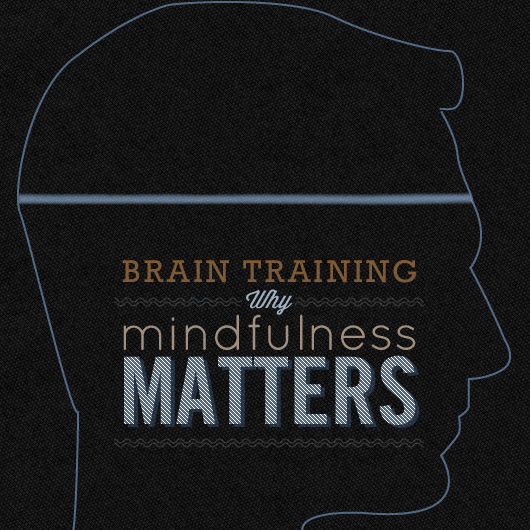
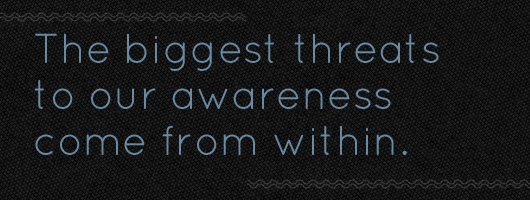
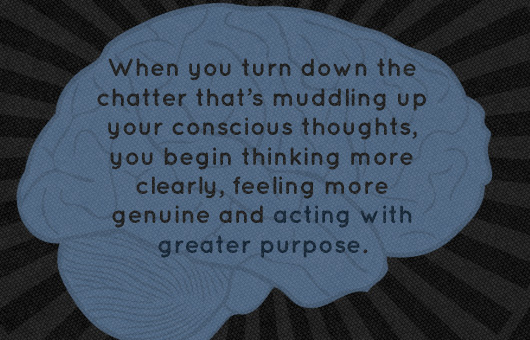

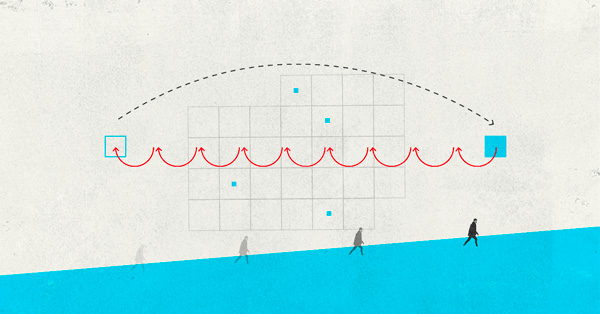
![It’s Time to Begin Again: 3 Uncomfortable Frameworks That Will Make Your New Year More Meaningful [Audio Essay + Article]](https://www.primermagazine.com/wp-content/uploads/2025/01/begin_again_feature.jpg)



